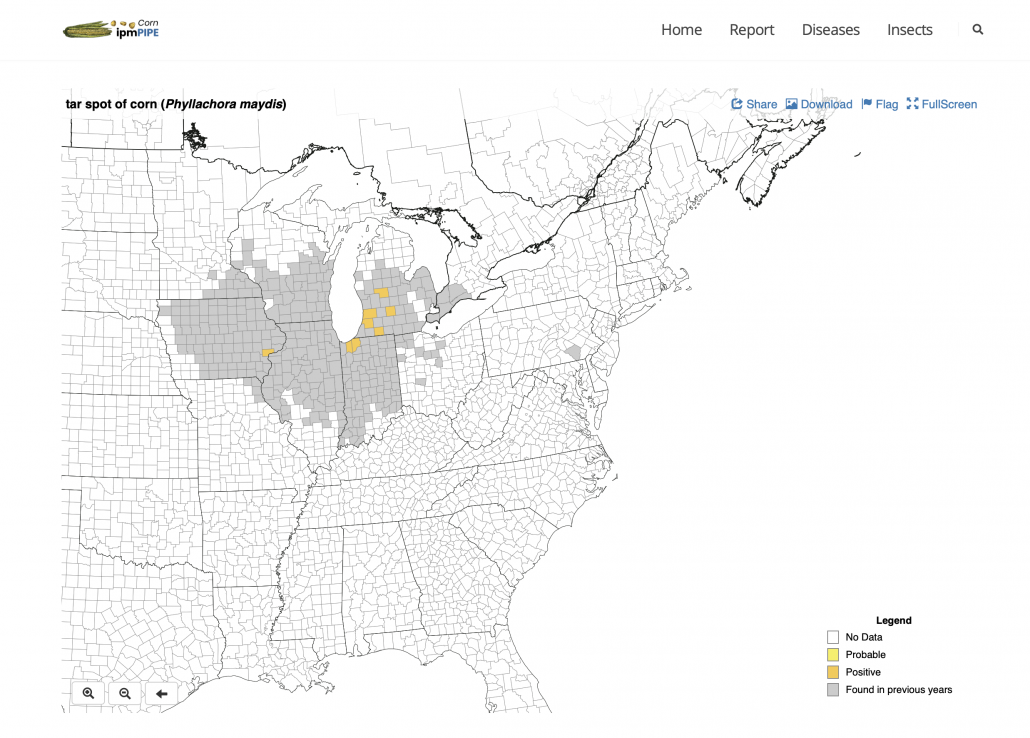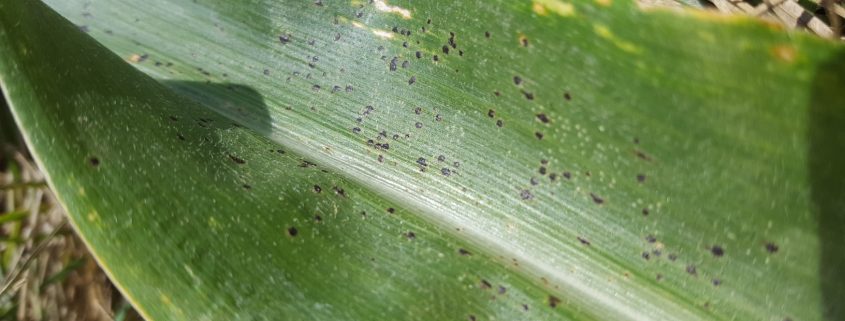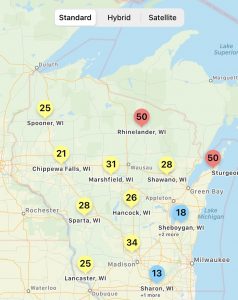Wisconsin Soybean and Corn Disease Update – July 7, 2021
Damon Smith, Extension Field Crops Pathologist, Department of Plant Pathology, University of Wisconsin-Madison
Brian Mueller, Assistant Field Researcher, Department of Plant Pathology, University of Wisconsin-Madison
Roger Schmidt, Nutrient and Pest Management Program, University of Wisconsin-Madison
Soybean White Mold Update
Figure 1 illustrates the calculated risk of white mold for select Wisconsin locations for non-irrigated soybeans, as determined by Sporecaster for July 7, 2021. This means that if soybeans are flowering and the area between rows is filled in more than 50%, risk is just moderate in most locations of the state, with the exception of the far northeast portions of the state. This moderate risk indicates that there may not be apothecia present in fields in these locations at this time, however, the situation needs to be monitored closely as we move from R1 to the R2 growth stage. With a cooler, wetter weather pattern over the next 5-7 days, I believe that the risk for white mold will increase. I’m expecting a later onset (closer to the R3 growth stage) of white mold for much of the state in 2021. Warmer weather up to this point has pushed the risk of white mold potentially later in the bloom period.
Current White Mold Management Recommendation
I wrote extensively about white mold management in my previous post. Take some time to read the management recommendations there. I think folks should be patient yet monitor the situation carefully over the next several weeks. Again, if calculated risk continues to rise, then a fungicide application may be warranted as we progress through the bloom period. Be sure to download the Sporecaster app to get tailored recommendations for your fields. You can also adjust the action thresholds in the app (my map above is set at the default 40% threshold) and run specific models for irrigated environments.
Corn Tar Spot Update
Figure 2 shows the calculated risk from Tarspotter (our smartphone prediction tool for tar spot) for July 7, 2021, for various locations in Wisconsin. The action threshold for high risk is 40% using the updated Tarspotter model for 2021. As you can see, the present risk is high for much of the state. Cooler, wet conditions over the next week will keep risk moderate to high. We have scouted several locations in Wisconsin and have been unable to find tar spot at this time in the state. However, figure 3 shows that tar spot has been found in some surrounding states, at low levels.
Current Tar Spot Management Recommendation
Monitoring Tarspotter (be sure to download it to your smartphone) and scouting should be done at this time to determine the diseases present. Tracking this situation, not only for tar spot but other corn diseases, will also help you make an in-season fungicide spray decision as we approach the very important VT/R1 growth stage. For more on making the decision to spray fungicide on corn, see my previous post. Get out and scout, scout, scout!

Figure 3. Confirmed tar spot cases in the U.S. as of July 7, 2021.







